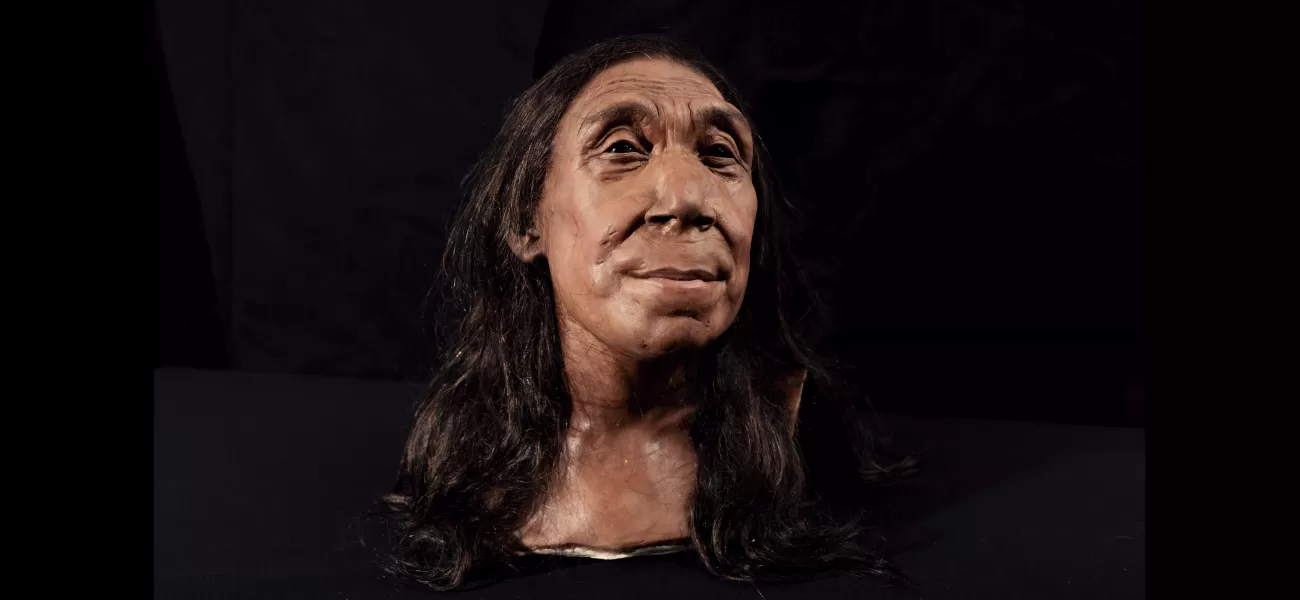Netflix documentary shows the face of a Neanderthal woman from 75,000 years ago.
She appears youthful despite being 75,000 years old.
May 1st 2024.

Allow me to introduce you to Shanidar Z, the latest discovery in the world of archaeology. This 75,000-year-old female Neanderthal has been brought back to life through the meticulous work of a team from the University of Cambridge and Liverpool John Moores in a new Netflix documentary. Through their efforts, we are able to see her face reconstructed from hundreds of bone fragments, despite her skull being shattered and flattened.
Shanidar Z was first found in a cave in Iraqi Kurdistan in 2018, where her species had a tradition of laying their dead to rest. This particular cave, known as Shanidar cave, was made famous in the late 1950s when several Neanderthals were unearthed, leading to the discovery of their burial practices. The new documentary, titled Secrets Of The Neanderthals, follows the team as they return to Shanidar cave to continue their excavations.
Dr. Emma Pomeroy, a palaeo-anthropologist from Cambridge's Department of Archaeology, explains that Neanderthal skulls have distinct features such as large brow ridges, lack of a chin, and a projecting midface, resulting in prominent noses. However, the reconstructed face of Shanidar Z suggests that these differences may not have been as prominent in life.
Recreating the skull was no easy feat, with lead conservator Dr. Lucía López-Polín having to piece together over 200 fragments by hand. The skull had been crushed, most likely by rockfall after Shanidar Z's death, and was flattened to a mere two centimeters due to sediment burying it. The team also believes that this skull may be the top half of an individual previously discovered in 1960.
Through careful examination, the researchers were able to determine that Shanidar Z was an older female, with her worn down teeth giving away her age. She was also estimated to be around five feet tall, making her one of the shortest adults in the Neanderthal fossil record. However, it was not just her physical characteristics that provided insight into her life. The site analysis revealed that Shanidar Z was laid to rest in a gully created by running water, which was then hollowed out by hand to accommodate her body.
Professor Graeme Barker, who leads the excavations at Shanidar cave, explains that this site is a significant laboratory for understanding human evolution. It is believed that Neanderthals were the first inhabitants of this cave, followed by our own species, Homo sapiens. This raises the question of why Neanderthals disappeared around the same time that Homo sapiens spread to regions where Neanderthals had lived for hundreds of thousands of years.
The Secrets Of The Neanderthals documentary will be available on Netflix worldwide on Thursday, May 2. Through the incredible work of this team of archaeologists, we are able to catch a glimpse into the life of Shanidar Z and gain a better understanding of our evolutionary history.
Shanidar Z was first found in a cave in Iraqi Kurdistan in 2018, where her species had a tradition of laying their dead to rest. This particular cave, known as Shanidar cave, was made famous in the late 1950s when several Neanderthals were unearthed, leading to the discovery of their burial practices. The new documentary, titled Secrets Of The Neanderthals, follows the team as they return to Shanidar cave to continue their excavations.
Dr. Emma Pomeroy, a palaeo-anthropologist from Cambridge's Department of Archaeology, explains that Neanderthal skulls have distinct features such as large brow ridges, lack of a chin, and a projecting midface, resulting in prominent noses. However, the reconstructed face of Shanidar Z suggests that these differences may not have been as prominent in life.
Recreating the skull was no easy feat, with lead conservator Dr. Lucía López-Polín having to piece together over 200 fragments by hand. The skull had been crushed, most likely by rockfall after Shanidar Z's death, and was flattened to a mere two centimeters due to sediment burying it. The team also believes that this skull may be the top half of an individual previously discovered in 1960.
Through careful examination, the researchers were able to determine that Shanidar Z was an older female, with her worn down teeth giving away her age. She was also estimated to be around five feet tall, making her one of the shortest adults in the Neanderthal fossil record. However, it was not just her physical characteristics that provided insight into her life. The site analysis revealed that Shanidar Z was laid to rest in a gully created by running water, which was then hollowed out by hand to accommodate her body.
Professor Graeme Barker, who leads the excavations at Shanidar cave, explains that this site is a significant laboratory for understanding human evolution. It is believed that Neanderthals were the first inhabitants of this cave, followed by our own species, Homo sapiens. This raises the question of why Neanderthals disappeared around the same time that Homo sapiens spread to regions where Neanderthals had lived for hundreds of thousands of years.
The Secrets Of The Neanderthals documentary will be available on Netflix worldwide on Thursday, May 2. Through the incredible work of this team of archaeologists, we are able to catch a glimpse into the life of Shanidar Z and gain a better understanding of our evolutionary history.
[This article has been trending online recently and has been generated with AI. Your feed is customized.]
[Generative AI is experimental.]
0
0
Submit Comment





